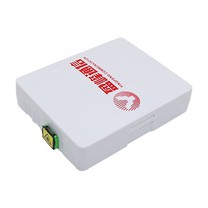Application and transmission distance of ultra-low loss fiber models
According to the optical fiber loss in the industry, the optical fiber is roughly divided into three categories: ordinary optical fiber, low-loss optical fiber, and ultra-low loss optical fiber. Compared with normal optical fiber, low loss and ultra-low loss optical fiber can reduce cross-sectional loss by 2dB and 3dB respectively. The total transmission distance is also improved by 17%.
For high-speed transmission networks, 100G transmission rate, ordinary fiber, low-loss fiber, ultra-low loss fiber can transmit more than 1000 km, in addition to individual ultra-long section, the existing ordinary fiber can cope; and for 400G transmission rate, low-loss fiber can reduce the number of regeneration stations by about 20%, ultra-low loss fiber can reduce the number of regeneration stations by about 40%, the benefits are obvious.
Compared with ordinary fiber, the excellent characteristics of ultra-low loss fiber can provide network margin to extend the network leap span, augment loci, upgrade to faster bit rates, increase the flexibility of network components or extend the distance between regenerators, thus enabling longer and wider regional networks to meet the growing global demand for bandwidth capacity.
The low-loss nature of ultra-low loss fiber is ideal for ultra-long distance and high-capacity, high-speed network transmission applications, resulting in a series of record-breaking applications. In addition, ultra-low loss fiber is not only widely used by operators, given the low attenuation characteristics. In addition to these advantages, the use of ultra-low loss fiber can significantly reduce costs. Increased transmission distance means fewer system regeneration stations, and one less regeneration station means tens of millions of RMB in investment savings. Along with the continuous integrity of the industry chain, ultra-low-loss fiber will surely usher in the era of large-scale commercialization.






